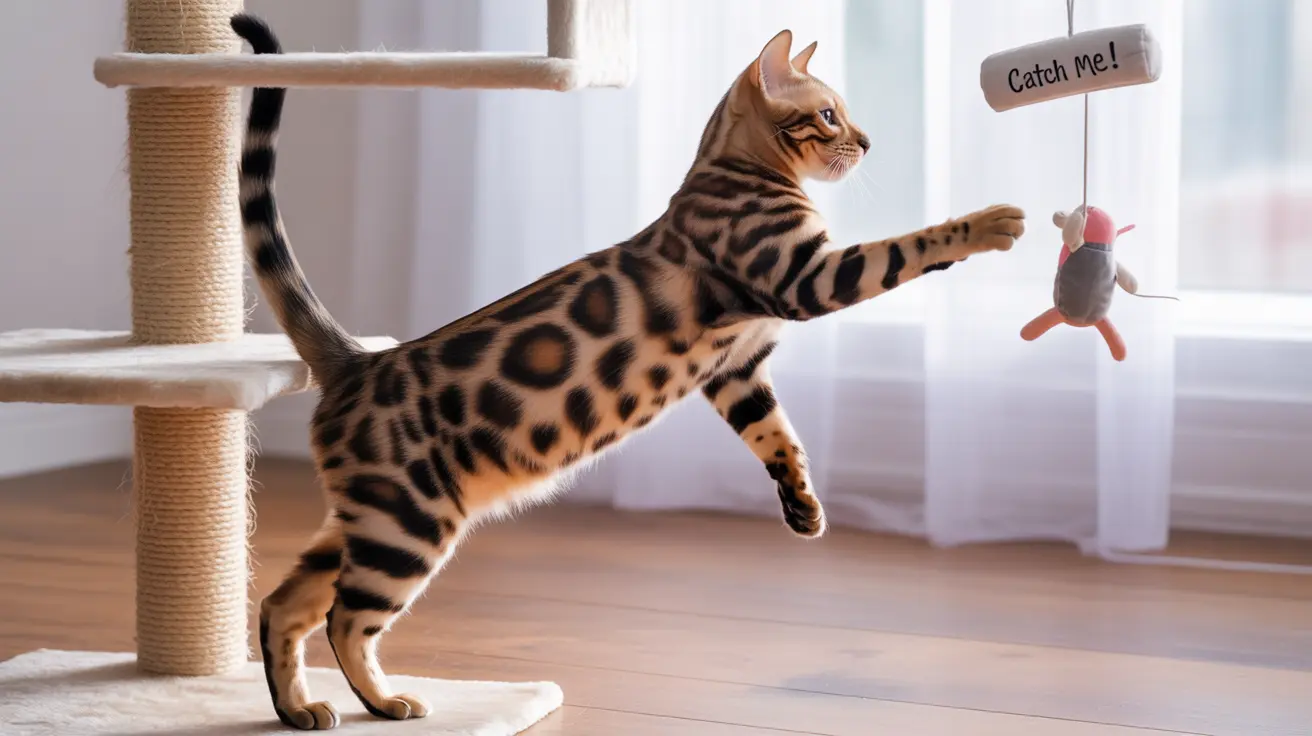Bengal cats captivate pet lovers with their exotic appearance and athletic build, combining the allure of wild cats with domestic cat companionship. Understanding what to expect from a full grown Bengal cat is crucial for potential owners and enthusiasts alike.
In this comprehensive guide, we'll explore everything you need to know about adult Bengal cats, from their impressive size specifications to their unique physical characteristics and care requirements.
Physical Dimensions of Adult Bengal Cats
A full grown Bengal cat typically reaches impressive proportions that set them apart from average domestic cats. Males generally weigh between 10-16 pounds, while females are slightly smaller at 8-12 pounds. Their muscular frame contributes to a height of 13-16 inches at the shoulder, with body lengths ranging from 16-18 inches, excluding their tail.
What makes Bengals particularly striking is their appearance of being larger than their actual weight suggests, thanks to their well-developed musculature and athletic build.
Growth Timeline and Development
Bengal cats follow a unique growth pattern, taking longer to reach full maturity compared to many other domestic breeds. Most Bengals achieve their full size between 18-24 months of age, though they may continue developing muscle definition even after reaching their adult weight.
Key Growth Stages:
- Birth to 4 months: Rapid growth from 3.5 ounces to 4-6 pounds
- 4-8 months: Significant muscle development, reaching 6-9 pounds
- 9-12 months: Adult frame development
- 18-24 months: Final maturation and full size achievement
Distinctive Physical Features
Beyond their size, full grown Bengal cats showcase several remarkable characteristics that make them instantly recognizable. Their coat patterns, featuring distinctive spots, rosettes, or marble designs, reflect their wild ancestry. The fur itself is uniquely soft and often displays a glittered effect that catches the light.
Their muscular physique is complemented by a broad chest, strong limbs, and a balanced, athletic appearance that speaks to their active nature.
Nutrition and Health Requirements
Supporting a full grown Bengal cat's muscular build and high energy levels requires careful attention to nutrition. These cats thrive on high-protein diets that maintain their muscle mass and fuel their active lifestyle. Regular meals should be portioned appropriately to prevent obesity while ensuring adequate nutrition.
Quality protein sources should constitute the majority of their diet, with appropriate supplements for joint health and overall vitality.
Exercise and Environmental Needs
Bengal cats retain their playful nature well into adulthood, requiring substantial physical activity to maintain their health and happiness. Their athletic build demands regular exercise through interactive play, climbing opportunities, and mental stimulation.
Recommended Activity Provisions:
- Multi-level cat trees for climbing
- Interactive toys that challenge their intelligence
- Dedicated play sessions multiple times daily
- Safe outdoor enclosures when possible
Frequently Asked Questions
How big does a full grown Bengal cat typically get in weight and size?
Adult Bengal cats typically weigh 8-16 pounds, with males being larger than females. They usually measure 13-16 inches in height and 16-18 inches in body length.
At what age do Bengal cats usually reach their full adult size?
Bengal cats typically reach their full adult size between 18-24 months of age, which is later than many other domestic cat breeds.
What are the key physical characteristics that distinguish full grown Bengal cats?
Full grown Bengal cats are distinguished by their muscular build, spotted or marbled coat patterns, soft fur with a distinctive glitter effect, and athletic appearance.
How should I adjust my Bengal cat's diet to support their muscular build as they grow?
Provide a high-protein diet specifically formulated for active cats, with regular meals portioned according to their size and activity level. Ensure fresh water is always available.
What exercise and care routines are best for maintaining the health of full grown Bengal cats?
Implement daily interactive play sessions, provide climbing opportunities through cat trees, offer mental stimulation through puzzle toys, and maintain regular veterinary check-ups for optimal health.
Understanding and meeting the unique needs of a full grown Bengal cat ensures these magnificent felines thrive in domestic settings while maintaining their distinctive wild appearance and playful nature.






